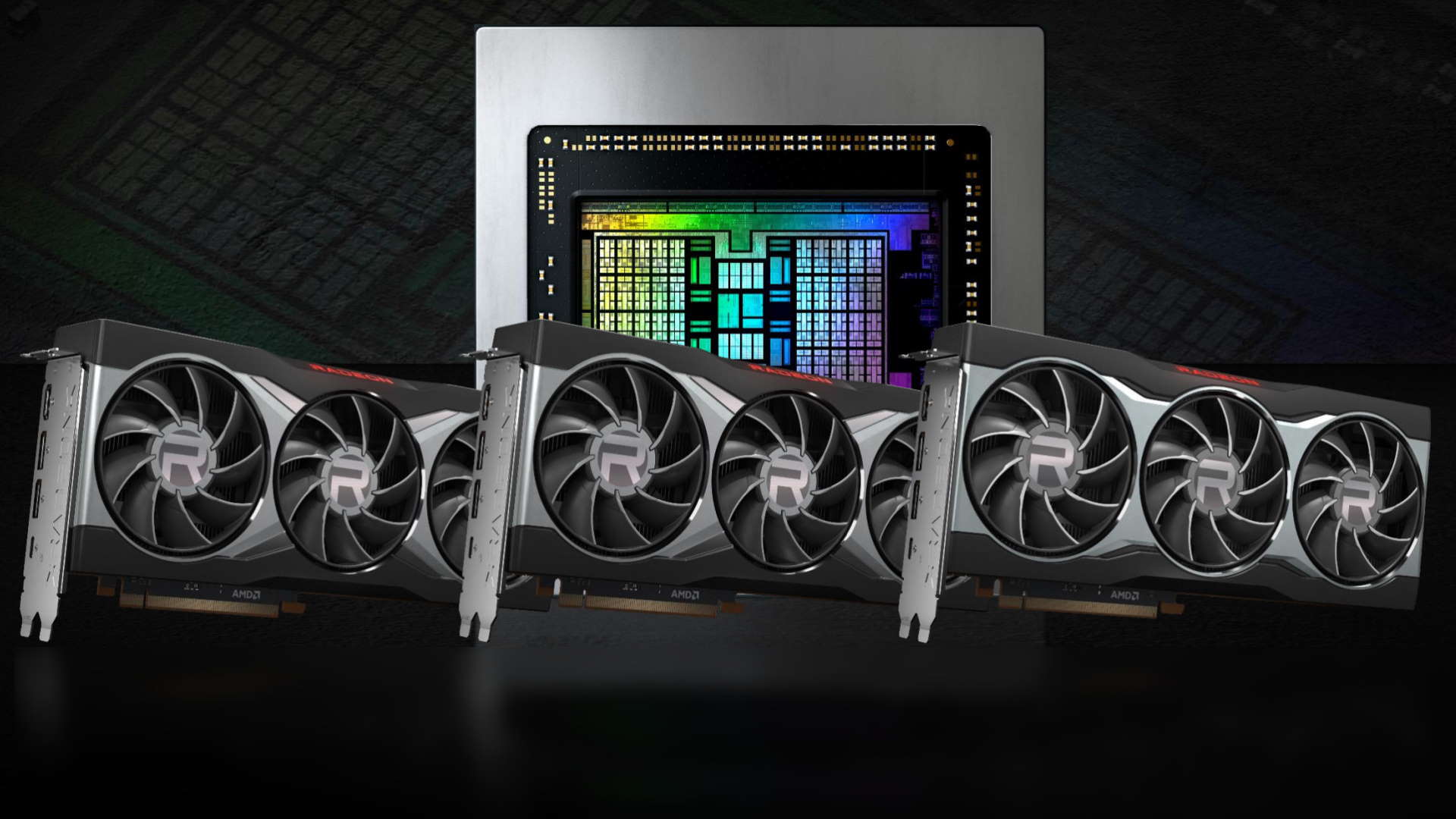AMD FSR 2.0 upscaling is tuned to run faster on RDNA 2-powered graphics cards
AMD's home turf advantage makes for a faster upscaler on RDNA 2-powered graphics cards.

AMD's FidelityFX Super Resolution 2.0 (FSR 2.0) technology is coming later this year, but before it drops, AMD has outlined just what makes its super upscaling algorithm tick. A presentation at GDC outlined what's improved with FSR 2.0 and also what has been optimised, and it's good news for RDNA 2 gamers in that regard.
AMD's latest GPU architecture hoovers up some exciting new optimisations to run FSR 2.0.
There are heaps of improvements coming with FSR 2.0—a full hour-long GDC talk could only just about cover it at a top level. But generally, you're looking at improved image quality, speed, antialiasing, and tons of optimisations.
These improvements come in all shapes and sizes: tonemap optimisations to free up GPU resources, Cache Blocking to reduce the time spent looking outside of local memory, and reworking the FidelityFX Single Pass Downsampler to aid in low-overhead Auto Exposure feature, to name a few. There's also a new feature to "lock" pixel wide ridges in place to ensure thin features don't flicker or disappear on-screen, such as fences or distant objects.
All of which will work across AMD, Nvidia, and even Intel's upcoming GPUs. FSR, and FidelityFX features generally, are open-source.
Though there are also specific RDNA-2 based optimisations to improve FSR 2.0.
For example, there are specific RDNA-2 based improvements for Lanczos approximation, an underlying algorithm for FSR. RDNA 2 shaders are also able to use either Wave32 or Wave64 modes. While FSR shaders run in Wave32 mode for the most part, they can sometimes benefit from Wave64, which means RDNA 2 GPUs may be able to capitalise at times.
The biggest gaming news, reviews and hardware deals
Keep up to date with the most important stories and the best deals, as picked by the PC Gamer team.
RDNA 2's Infinity Cache also sounds handy in some instances here—FSR 2.0 can become quite cache hungry with 4K frames. Even with a larger cache, AMD says some spilling can occur. Hence why it's using Cache Blocking to help alleviate congestion by splitting up workloads and running them all in the local area cache for increased hit rates. That should also benefit other GPUs without so much local memory, too.

Best CPU for gaming: The top chips from Intel and AMD
Best gaming motherboard: The right boards
Best graphics card: Your perfect pixel-pusher awaits
Best SSD for gaming: Get into the game ahead of the rest
And just because AMD is rolling out improvements to RDNA 2-based GPUs, such as the RX 6800 XT, it's ensuring that these improvements won't hinder older Radeon GPUs or those from the competition, it says.
To do so, there are various fallbacks in place. The optimisations that may hinder non-RDNA-2 cards are marked down and FSR 2.0, when configured correctly by AMD, should automatically ignore them when running on other GPUs. Wave size is the example AMD gives, which is only set to use Wave64 when FSR performance will actually increase on suitable GPUs as a result.
FSR 2.0 sounds like a major advancement in AMD's upscaling technology, and I'm hopeful it's akin to Nvidia's leap in performance and quality between DLSS 1.0 and DLSS 2.0. With that comes "significant" performance gains over FSR 1.0, though also has its drawbacks. AMD says that FSR 2.0, unlike FSR 1.0, is only recommended for use on fairly recent and powerful GPUs. The Nvidia GeForce GTX 1060, for example, is not recommended by AMD for use with FSR 2.0.
While some gamers with older tech may not benefit as much as others from FSR 2.0, AMD is bringing FSR 2.0 to Xbox with Microsoft so that console gamers can give high-quality upscaling a go.

Jacob earned his first byline writing for his own tech blog. From there, he graduated to professionally breaking things as hardware writer at PCGamesN, and would go on to run the team as hardware editor. He joined PC Gamer's top staff as senior hardware editor before becoming managing editor of the hardware team, and you'll now find him reporting on the latest developments in the technology and gaming industries and testing the newest PC components.

